Home>Garden Essentials>Why Do Farmers Include Soybeans In A Grain Crop Rotation
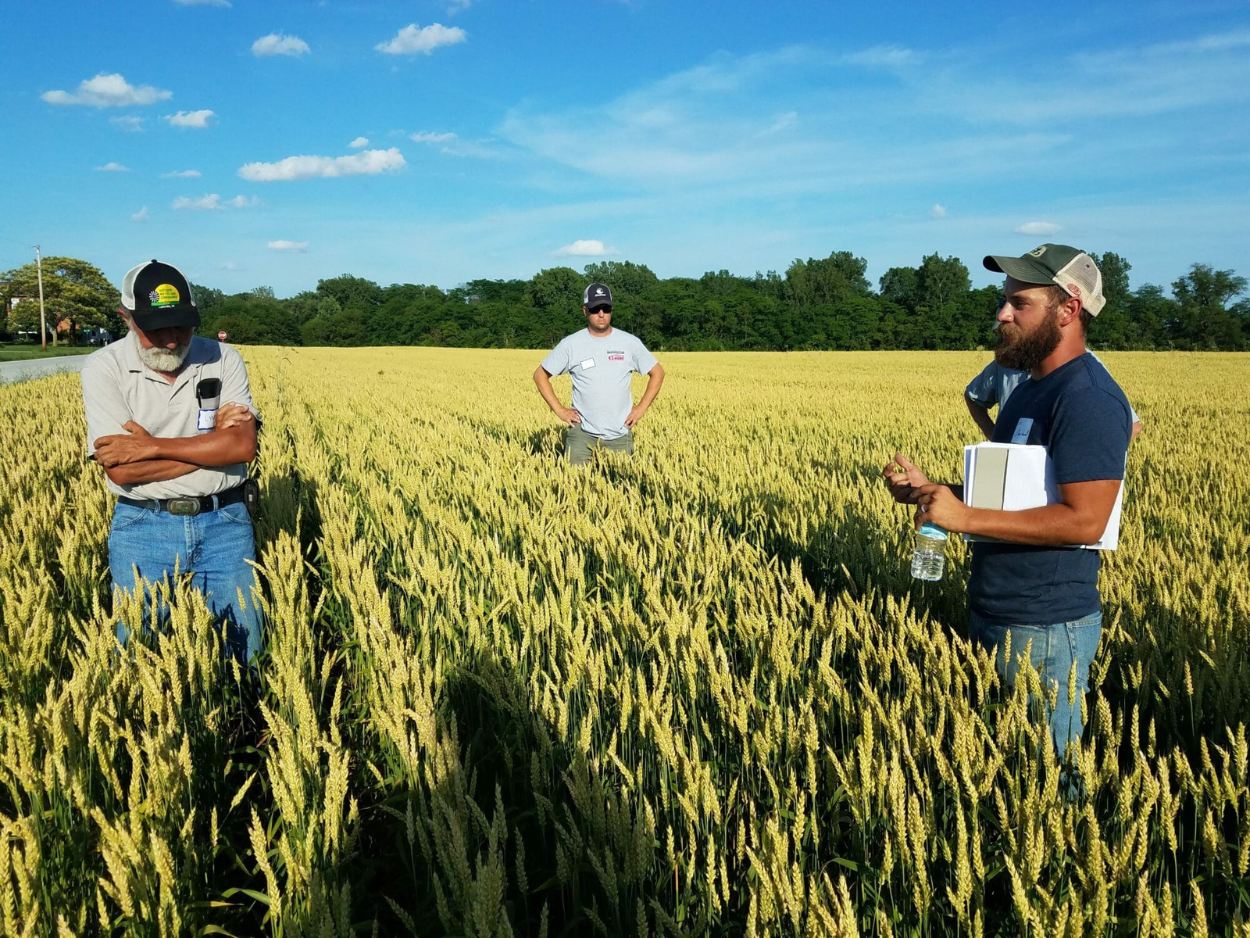

Garden Essentials
Why Do Farmers Include Soybeans In A Grain Crop Rotation
Modified: March 25, 2024
Discover the benefits of including soybeans in your grain crop rotation and how it can improve your garden's overall health and yield. Learn more now!
(Many of the links in this article redirect to a specific reviewed product. Your purchase of these products through affiliate links helps to generate commission for Storables.com, at no extra cost. Learn more)
Introduction
When it comes to successful farming and sustainable agriculture practices, crop rotation is a key strategy that has been employed for centuries. By alternating different crops in a specific sequence, farmers can improve soil health, increase yields, and reduce the dependencies on synthetic fertilizers and pesticides.
One crop that has gained significant attention in grain crop rotation is soybeans. While traditionally associated with being a cash crop, soybeans also bring a range of benefits to the overall rotation system. In this article, we will delve into the reasons why farmers include soybeans in a grain crop rotation and the advantages they offer to both the environment and the farmer’s bottom line.
Key Takeaways:
- Including soybeans in a grain crop rotation helps farmers improve soil health, manage pests, and reduce the need for chemical fertilizers and herbicides. This sustainable practice benefits both the environment and the farmer’s bottom line.
- Soybeans in crop rotations provide economic advantages by diversifying income streams, tapping into market demand, and reducing input costs. They also contribute to sustainable farming practices, promoting long-term soil health and minimizing environmental impact.
Read more: Why Do Farmers Practice Crop Rotation
Benefits of Crop Rotation
Before we delve into the reasons for including soybeans in a grain crop rotation, it’s important to understand the broader benefits of this agricultural practice. Crop rotation is a systematic approach where different crops are grown in a specific order over a designated period of time.
1. Soil Health: Crop rotation helps maintain soil fertility by diversifying the nutrient demands of different crops. It allows the soil to recover from nutrient depletion and reduces the risk of diseases and pests that target specific crops.
2. Pest Management: By rotating crops, farmers can disrupt the life cycles of pests and weeds that are specific to a particular crop. This reduces the reliance on chemical pesticides, promoting a more sustainable and eco-friendly farming system.
3. Weed Suppression: Different crops have varying growth habits and canopy structures that can outcompete and suppress weeds. Crop rotation can effectively manage weeds without the excessive use of herbicides, reducing potential herbicide resistance and minimizing environmental impact.
What is Grain Crop Rotation?
Grain crop rotation refers to the practice of rotating different types of grain crops in a specific sequence over several years. This practice is commonly utilized in large-scale farming operations, where maximizing yield and promoting sustainable practices are of utmost importance.
Within a grain crop rotation system, farmers typically rotate between crops such as corn, wheat, barley, oats, and soybeans. Each crop has its own unique growth requirements and benefits, making them ideal candidates for rotation.
Understanding Soybeans
Soybeans are a versatile legume crop that is native to East Asia. They are known for their high protein content and oil-rich seeds, making them a valuable commodity in both food and industrial applications.
One of the unique features of soybeans is their ability to fix atmospheric nitrogen through a symbiotic relationship with specialized bacteria in their root systems. This nitrogen fixation process reduces the need for synthetic nitrogen fertilizers, thereby benefiting the environment and reducing input costs for farmers.
Soybeans are well-suited for inclusion in a grain crop rotation due to their ability to improve soil health, supplement nitrogen availability, manage weeds, and reduce the incidence of certain diseases.
Key Takeaways:
- Including soybeans in a grain crop rotation helps farmers improve soil health, manage pests, and reduce the need for chemical fertilizers and herbicides. This sustainable practice benefits both the environment and the farmer’s bottom line.
- Soybeans in crop rotations provide economic advantages by diversifying income streams, tapping into market demand, and reducing input costs. They also contribute to sustainable farming practices, promoting long-term soil health and minimizing environmental impact.
Read more: Why Do Farmers Practice Crop Rotation
Benefits of Crop Rotation
Before we delve into the reasons for including soybeans in a grain crop rotation, it’s important to understand the broader benefits of this agricultural practice. Crop rotation is a systematic approach where different crops are grown in a specific order over a designated period of time.
1. Soil Health: Crop rotation helps maintain soil fertility by diversifying the nutrient demands of different crops. It allows the soil to recover from nutrient depletion and reduces the risk of diseases and pests that target specific crops. For example, leguminous crops like soybeans have the ability to fix atmospheric nitrogen, enriching the soil with this essential nutrient.
2. Pest Management: By rotating crops, farmers can disrupt the life cycles of pests and weeds that are specific to a particular crop. This reduces the reliance on chemical pesticides, promoting a more sustainable and eco-friendly farming system. For instance, rotating soybeans with crops like corn or wheat can help control pests such as corn rootworms or wheat midge, respectively.
3. Weed Suppression: Different crops have varying growth habits and canopy structures that can outcompete and suppress weeds. Crop rotation can effectively manage weeds without the excessive use of herbicides, reducing potential herbicide resistance and minimizing environmental impact. In the case of soybeans, their dense foliage can shade out weeds, leading to better weed control in subsequent crops.
4. Disease Reduction: Crop rotation also helps reduce the incidence of certain diseases. Planting the same crop continuously in the same area can create a buildup of pathogens that target that specific crop. By rotating crops, farmers can disrupt the disease cycle and minimize the risk of widespread infections. Soybeans, for example, have been found to suppress certain soilborne diseases like soybean cyst nematodes when included in a rotation with other crops.
5. Nutrient Cycling: Different crops have different nutrient requirements, and rotating crops allows for efficient nutrient cycling. For example, soybeans have a high nitrogen requirement and can benefit from the residual nitrogen left behind by previous crops. Likewise, crops like corn or wheat that require higher levels of phosphorus or potassium can benefit from the residual levels present after a soybean rotation.
Overall, crop rotation is a valuable practice that promotes sustainable agriculture by enhancing soil health, reducing pest pressure, managing weeds, minimizing disease risks, and optimizing nutrient cycling. By strategically including soybeans in a grain crop rotation, farmers can further leverage these benefits and optimize their farming operations.
What is Grain Crop Rotation?
Grain crop rotation refers to the practice of rotating different types of grain crops in a specific sequence over several years. This practice is commonly utilized in large-scale farming operations, where maximizing yield and promoting sustainable practices are of utmost importance.
Within a grain crop rotation system, farmers typically rotate between crops such as corn, wheat, barley, oats, and soybeans. Each crop has its own unique growth requirements and benefits, making them ideal candidates for rotation.
The specific rotation sequence may vary depending on factors such as climate, soil conditions, regional market demand, and the farmer’s goals. However, a common example of a grain crop rotation could involve alternating between corn, soybeans, and wheat in a three-year cycle.
During the first year of the rotation, corn may be planted. Corn is a heavy feeder and requires ample nitrogen and other nutrients. It is also vulnerable to certain pests and diseases. By planting corn in the first year, farmers can easily provide the necessary nutrients without depleting the soil excessively. Additionally, any pest or disease issues can be addressed and managed effectively.
In the second year, soybeans may be planted. Soybeans have the unique ability to fix atmospheric nitrogen through a symbiotic relationship with specialized bacteria in their root systems. This nitrogen fixation process reduces the need for synthetic nitrogen fertilizers, thereby benefiting the environment and reducing input costs for farmers. Additionally, soybeans have a different pest and disease profile compared to corn, allowing for a break in the pest and disease cycle.
In the third year, wheat or another small grain crop may be planted. Small grains like wheat have lower nutrient requirements compared to corn and can utilize the residual nutrients left by the previous crops, further optimizing the nutrient cycling within the rotation system. Wheat also helps break the cycle of pests and diseases that may have developed in the previous years’ crops.
The specific crop rotation pattern can be adapted and modified based on the farmer’s goals, the regional climate and soil conditions, and market demand for different crops. However, the underlying principle remains the same – by rotating different grain crops, farmers can manage pests and diseases, optimize nutrient utilization, reduce soil degradation, and improve overall crop health and yield.
In addition, incorporating other rotational crops such as barley or oats can further diversify the rotation and provide additional benefits. The key is to ensure a good balance between the different crops in order to maximize the advantages of the rotation system.
It is worth noting that grain crop rotation requires careful planning and consideration of various factors. Farmers need to assess the specific needs of each crop, understand their growth requirements, and pay attention to proper soil management practices to ensure the success of the rotation system. Consulting with agricultural experts and utilizing advanced farming techniques can also enhance the effectiveness of grain crop rotation.
Understanding Soybeans
Soybeans are a versatile legume crop that is native to East Asia. They are known for their high protein content and oil-rich seeds, making them a valuable commodity in both food and industrial applications. Soybeans are grown in many different regions around the world, including North and South America.
One of the unique features of soybeans is their ability to fix atmospheric nitrogen through a symbiotic relationship with specialized bacteria in their root systems. This process, known as nitrogen fixation, allows soybeans to convert nitrogen gas from the air into a form that plants can use for growth. As a result, soybeans can enrich the soil with nitrogen, reducing the need for synthetic nitrogen fertilizers.
Soybeans are well-suited for inclusion in a grain crop rotation due to their ability to improve soil health, supplement nitrogen availability, manage weeds, and reduce the incidence of certain diseases.
Improving Soil Health: Soybeans have a deep taproot system that helps loosen compacted soil and improve its structure. This allows for better drainage and root penetration of subsequent crops. The root system also contributes organic matter to the soil, enhancing its fertility and overall health.
Nitrogen Fixation: By harnessing the process of nitrogen fixation, soybeans take in atmospheric nitrogen and convert it into a usable form for themselves and other crops in the rotation. This reduces the need for nitrogen fertilizers, which can be costly and have negative environmental impacts when overused. Furthermore, the residual nitrogen left by soybeans benefits subsequent crops in the rotation, resulting in improved growth and yields.
Weed Management: Soybeans have a dense canopy that shades the ground, suppressing weed growth. This natural weed suppression reduces competition for resources and helps control weed populations. By including soybeans in a grain crop rotation, farmers can effectively manage weeds and reduce the reliance on herbicides.
Disease Reduction: Soybeans have been found to reduce the incidence of certain diseases when included in crop rotations. For example, soybeans release compounds called phytoalexins, which have antimicrobial properties and may help suppress pathogens in the soil. The inclusion of soybeans in a rotation can disrupt the disease cycle and reduce the build-up of pathogens that target specific crops.
Aside from their agronomic benefits, soybeans also offer economic advantages to farmers. They are a valuable cash crop that can generate income, especially in regions with high demand for soybean products such as soybean oil, soy protein, and animal feed supplements.
It is important for farmers to select suitable soybean varieties for their specific growing conditions, as soybeans have different maturity rates, disease resistance, and yield potentials. Working with local agricultural extension services and utilizing modern genetic advancements can help farmers make informed decisions and maximize the benefits of including soybeans in their grain crop rotations.
In summary, soybeans are a valuable addition to a grain crop rotation due to their ability to improve soil health, enrich nitrogen availability, suppress weeds, reduce disease incidence, and provide economic opportunities. Their unique capacity for nitrogen fixation and their beneficial impact on subsequent crops make them an excellent choice for sustainable and profitable farming practices.
Soybeans are a legume that adds nitrogen to the soil, improving soil health and benefiting the following grain crop. This rotation also helps to control pests and diseases.
Reasons for Including Soybeans in a Grain Crop Rotation
Including soybeans in a grain crop rotation offers numerous benefits to farmers and the overall health of their farming system. Here are some key reasons why soybeans are commonly included in a grain crop rotation:
1. Improving Soil Health: Soybeans have a deep root system that helps break up compacted soils and improve their structure. This aids in better water infiltration and allows for improved nutrient uptake by subsequent crops. The taproots of soybeans also enhance soil aeration and microbial activity, promoting overall soil health and fertility.
2. Nitrogen Fixation: Perhaps one of the most significant advantages of including soybeans in crop rotations is their ability to fix atmospheric nitrogen. Through a symbiotic relationship with nitrogen-fixing bacteria in their root nodules, soybeans convert atmospheric nitrogen into a form usable by plants. This reduces the need for synthetic nitrogen fertilizers in subsequent crops, saving farmers both money and reducing their environmental impact.
3. Weed Management: Soybeans can help manage weed populations in a crop rotation system. The dense canopy created by soybean plants shades the soil and outcompetes weeds for sunlight, reducing their growth and spread. By including soybeans in rotation, farmers can naturally suppress weed growth and minimize the need for herbicides, lowering chemical inputs and potential herbicide resistance issues.
4. Disease Reduction: Soybeans can contribute to disease reduction in a crop rotation. By interrupting disease life cycles and acting as biological reservoirs for beneficial microbes, soybeans can help suppress certain plant diseases that may affect subsequent crops in the rotation. This break in disease cycles provides a greater opportunity for the farmer to implement effective disease management strategies and reduce yield losses.
5. Rotational Benefits: Including soybeans in a grain crop rotation provides a beneficial rotation cycle. Soybeans have differing nutrient requirements compared to other grain crops like corn or wheat. By strategically rotating soybeans with these other crops, farmers can better utilize available nutrients, effectively manage nutrient imbalances, and reduce the risk of nutrient deficiencies or toxicities. This rotational diversity contributes to overall crop health and increased yields.
6. Economic Considerations: Soybeans are a valuable cash crop with a strong international market demand. Including soybeans in a rotation can provide farmers with an additional income stream. Also, by diversifying their crop portfolio, farmers can reduce the dependency on a single crop and mitigate price fluctuations associated with specific grains.
By including soybeans in a grain crop rotation, farmers can enhance the sustainability and profitability of their farming operations. The numerous benefits that soybeans offer, such as improved soil health, nitrogen fixation, weed management, disease reduction, and economic advantages, make them a valuable and advantageous component of any crop rotation system.
Improving Soil Health
Improving soil health is a primary goal for farmers in order to sustainably grow crops and maximize yields. Including soybeans in a grain crop rotation can greatly contribute to soil health improvement through various mechanisms. Here are a few key ways in which soybeans can help improve soil health:
1. Break Up Compacted Soils: Soybeans have a taproot system that can penetrate deep into the soil. This helps break up compacted layers, improving soil structure and porosity. Compacted soils restrict water infiltration, root growth, and nutrient movement. By breaking up compacted soils, soybeans enhance the soil’s ability to absorb water, promote better root development, and allow nutrients to reach plant roots more efficiently.
2. Organic Matter Contribution: Soybeans contribute to the organic matter content of the soil. As plants grow and mature, they shed leaves, stems, and roots. These plant residues contribute to the build-up of organic matter, which serves as a food source for beneficial soil organisms. Organic matter improves soil structure, water retention, and nutrient-holding capacity. The decomposition of organic matter also releases essential nutrients for the following crops, promoting their growth and productivity.
3. Nitrogen Fixation: One of the unique qualities of soybeans is their ability to fix atmospheric nitrogen. Through a symbiotic relationship with rhizobia bacteria, soybeans convert atmospheric nitrogen gas into a form that can be utilized by plants. This biological nitrogen fixation reduces the need for synthetic nitrogen fertilizers and minimizes nitrogen fertilizer runoff, which can contribute to water pollution. The nitrogen fixed by soybeans becomes available to other crops in the rotation, providing a natural source of fertility to the soil.
4. Enhancing Soil Microbial Activity: Soybeans promote a healthy soil microbiome. The rhizobia bacteria that form nodules on soybean roots fix nitrogen, but they also stimulate the growth of other beneficial soil microorganisms. These microbes support nutrient cycling, organic matter decomposition, and disease suppression. By fostering a diverse and thriving microbial community, soybeans enhance overall soil health and function.
5. Reduced Erosion: Soybeans help control soil erosion. Their dense foliage and strong root systems provide excellent ground cover, protecting soils from erosion by wind and water. By keeping the soil in place, soybeans preserve valuable topsoil layers and prevent nutrient loss that can occur during erosion events. This helps maintain soil fertility and productivity over the long term.
6. Weed Suppression: Another soil health benefit of soybeans is their ability to manage weeds. The dense canopy created by soybean plants shades the soil, reducing sunlight availability for weed germination and growth. This natural weed suppression reduces competition for resources, allowing the following crops in the rotation to establish and grow more effectively. By minimizing weed pressures, soybeans contribute to improved crop quality and yield potential.
By including soybeans in a grain crop rotation, farmers can significantly enhance soil health and promote sustainable agricultural practices. The contributions of soybeans, such as breaking up compacted soils, increasing organic matter content, nitrogen fixation, fostering microbial activity, reducing erosion, and suppressing weeds, collectively improve soil fertility, structure, and overall health. This, in turn, leads to increased crop productivity, long-term sustainability, and healthier ecosystems.
Nitrogen Fixation
Nitrogen is an essential nutrient for plants’ growth and development. However, atmospheric nitrogen gas (N₂) is unavailable for most plants in this form. In the process of nitrogen fixation, certain plants, including soybeans, have the remarkable ability to convert atmospheric nitrogen into a usable form through a symbiotic relationship with nitrogen-fixing bacteria called rhizobia. This process is of immense agricultural significance and offers several key benefits:
1. Reduced Dependency on Synthetic Nitrogen Fertilizers: Nitrogen fixation by soybeans reduces the need for synthetic nitrogen fertilizers, which are energy-intensive to produce and have potential environmental impacts. By forming nodules on their roots, soybeans house rhizobia bacteria, which convert atmospheric nitrogen into ammonium. This biological conversion provides a natural and renewable source of nitrogen for soybeans and other plants in the crop rotation, minimizing the reliance on synthetic fertilizers and their associated costs.
2. Enhanced Nitrogen Availability: The fixed nitrogen from soybeans becomes available to neighboring crops in the rotation. As soybeans mature and residues decompose, the nitrogen they have fixed is released into the soil, providing a valuable source of fertility for subsequent crops. This improves overall nutrient cycling within the system, ensuring that nitrogen is efficiently utilized by plants and reducing the risk of nutrient deficiencies.
3. Improved Soil Fertility: Nitrogen fixation not only benefits soybeans but also contributes to long-term soil fertility. The addition of nitrogen-rich residues and organic matter from soybeans enriches the soil, providing a source of nitrogen for future crops. This organic matter enhances soil structure, water-holding capacity, and microbial activity, fostering a healthy and productive soil ecosystem.
4. Environmental Benefits: Nitrogen fixation by soybeans has a positive environmental impact. Synthetic nitrogen fertilizers can leach into water sources, leading to water pollution and the depletion of oxygen in aquatic ecosystems. By reducing the need for nitrogen fertilizers, soybeans help mitigate these environmental concerns. Nitrogen fixation also contributes to reducing greenhouse gas emissions associated with the production and application of synthetic fertilizers.
5. Sustainable Farming Practices: Incorporating soybeans into a crop rotation with nitrogen-fixing capabilities promotes sustainable farming practices. By diversifying the crop rotation and including leguminous crops like soybeans, farmers can harness the natural nitrogen-fixing ability to maintain soil fertility, decrease input costs, and reduce the environmental impact of their agricultural operations. This supports the long-term viability and resilience of farming systems.
6. Economic Benefits: Nitrogen fixation offers economic advantages to farmers. By reducing the need for nitrogen fertilizers, farmers can lower their input costs, increasing their profitability. Additionally, the value of fixed nitrogen extends beyond soybeans into the subsequent crops in the rotation, which can experience enhanced yield potential with a readily available nitrogen source.
Nitrogen fixation by soybeans is a remarkable biological process that plays a crucial role in sustainable agriculture. By leveraging this ability, farmers can reduce their dependence on synthetic fertilizers, enhance soil fertility, improve environmental stewardship, and optimize economic returns. Incorporating nitrogen-fixing legumes like soybeans into crop rotations offers a win-win solution, benefitting both farms and the larger ecological landscape.
Weed Management
Weed management is a constant challenge for farmers, as weeds compete with crops for resources, space, and light. Including soybeans in a grain crop rotation can provide effective weed management benefits and reduce the reliance on herbicides. Here are several ways in which soybeans contribute to weed management:
1. Shading and Competition: Soybeans have a dense canopy and a vigorous growth habit, which allows them to effectively shade the ground as they mature. This shading suppresses weed growth by limiting their access to sunlight and significantly reducing weed seed germination and growth. Soybeans’ ability to outcompete and shade weeds helps in controlling their populations, promoting healthier and more productive crop growth.
2. Crop Rotation Disruption: Including soybeans in a grain crop rotation disrupts the life cycles of weeds that are specific to other crops. For example, if corn is the primary crop in the rotation, soybeans can break the cycle of corn-specific weed issues. By rotating crops, farmers prevent the build-up of weed populations specific to a particular crop, reducing the need for targeted herbicides and other weed control measures.
3. Allelopathy: Soybeans have the ability to release certain compounds called allelochemicals, which can inhibit the growth of other plant species. These naturally occurring chemicals can have allelopathic effects on weed seed germination and growth. By including soybeans in a rotation, farmers can take advantage of this allelopathic process to suppress weed development and minimize their impact on crop yields.
4. Reduced Herbicide Dependency: Soybeans’ weed suppression abilities can decrease the reliance on herbicides. While herbicides can be an effective tool for weed control, overreliance on them can lead to the development of herbicide resistance in weeds and potential negative environmental impacts. By incorporating soybeans in rotation, farmers can reduce the frequency and intensity of herbicide applications, minimizing the risk of herbicide resistance and lowering chemical inputs.
5. Cover Crop Benefits: After soybeans are harvested, the remaining plant residues create a protective cover on the soil surface. This cover helps to block sunlight, preventing weed seeds from receiving the light they need to germinate. Additionally, the decomposing soybean residues release organic matter into the soil, improving soil structure and further inhibiting weed growth. When used as a cover crop, soybeans can contribute to weed management by suppressing weed emergence and growth during fallow periods.
6. Integrated Weed Management: Soybeans fit well into integrated weed management (IWM) strategies, which aim to manage weeds using a combination of techniques. By incorporating cultural practices, such as rotating crops, utilizing cover crops, timely cultivation, and judicious herbicide use, farmers can implement a more comprehensive and sustainable approach to weed management. Soybeans provide a valuable component of an integrated approach, contributing to the overall effectiveness of weed control strategies.
By including soybeans in a grain crop rotation, farmers can implement effective weed management strategies that reduce the reliance on herbicides, suppress weed growth, and maintain healthier and more productive crop systems. These integrated weed management practices not only benefit the farm economically but also contribute to sustainable agriculture practices and minimize the environmental impact of weed control.
Disease Reduction
Disease management is a critical aspect of crop production, as plant diseases can significantly impact yields and quality. Including soybeans in a grain crop rotation can contribute to reducing the incidence of certain diseases and improve overall disease management. Here are several ways in which soybeans aid in disease reduction:
1. Break in Disease Cycle: Incorporating soybeans in a crop rotation helps interrupt the disease cycle of pathogens that target specific crops. By introducing a different crop species into the rotation, farmers disrupt the presence of host crops and break the continuous cycle of disease development. This break in the disease cycle limits the buildup of plant pathogens in the soil, reducing the risk of widespread infection and subsequent crop losses.
2. Allelopathic Effects: Soybeans have allelopathic properties, meaning they release chemicals that can inhibit the growth and development of certain plant pathogens. These allelochemicals can help suppress the population of soilborne pathogens, such as certain fungal and bacterial species. By including soybeans in a rotation, farmers can take advantage of the allelopathic effects, suppressing diseases caused by these pathogenic organisms.
3. Biological Disease Suppression: Soybeans contribute to biological disease suppression in the soil. The roots of soybean plants release compounds called phytoalexins, which are natural defense mechanisms against microbial pathogens. These phytoalexins can help suppress various soilborne diseases by inhibiting the growth and activity of pathogens. The inclusion of soybeans in a crop rotation contributes to the presence of these disease-suppressive compounds in the soil, providing a naturally occurring defense against certain pathogens.
4. Nutrient Balancing: Crop rotations that include soybeans can help balance nutrient levels in the soil, which can indirectly impact disease development. Some plant diseases are favored by imbalanced nutrient availability. By rotating crops, farmers can optimize the nutrient requirements of different plants, promoting healthier crops that are less susceptible to diseases. Soybeans, with their ability to fix nitrogen and enrich the soil with this essential nutrient, contribute to better nutrient balance, providing optimal conditions for disease-resistant crops.
5. Reduced Inoculum: Inclusion of soybeans in rotation can reduce the number of pathogen inocula in the field. Soybeans are less susceptible to certain diseases that affect other crops in the rotation. By reducing the number of disease-causing pathogens present in the field, farmers can minimize the risk of disease transmission to subsequent crops. This is especially beneficial for diseases that have a residue-borne or soilborne nature, where crop rotation acts as an effective management strategy.
6. Overall Crop Health: The health and vigor of plants play a crucial role in their ability to resist diseases. Including soybeans in a rotation improves overall crop health, as soybeans are relatively disease-resistant. The rotation breaks the disease cycle, enhances soil conditions, and reduces disease pressures on subsequent crops. This improved crop health, combined with effective cultural practices and timely disease management strategies, contributes to better disease control and mitigation of yield losses.
By including soybeans in a grain crop rotation, farmers can effectively reduce the incidence and severity of certain plant diseases. The rotation strategy disrupts the disease cycle, enhances the soil’s disease-suppressive properties, optimizes nutrient balance, reduces inoculum, and promotes overall crop health. These disease reduction benefits contribute to more sustainable and resilient farming systems, ensuring healthier crops and increased productivity.
Economic Considerations
When it comes to agricultural practices, considering the economic aspects is crucial for farmers. Including soybeans in a grain crop rotation offers various economic advantages. Here are several key economic considerations to take into account:
1. Diversified Income Stream: Including soybeans in a crop rotation allows farmers to diversify their income streams. Soybeans are a valuable cash crop, and their inclusion in the rotation provides an opportunity for farmers to generate additional revenue. By diversifying their crop portfolio, farmers reduce their dependence on a single crop and mitigate the risks associated with market fluctuations and price volatility.
2. Market Demand: Soybeans have a strong international market demand, both for food and industrial applications. The global demand for soybean products, such as soybean oil, soy protein, and animal feed supplements, presents an opportunity for farmers to tap into profitable markets. The inclusion of soybeans in a rotation enables farmers to take advantage of this demand and potentially achieve higher economic returns.
3. Reduced Input Costs: Incorporating soybeans in a grain crop rotation helps reduce input costs. Soybeans have the ability to fix atmospheric nitrogen through their symbiotic relationship with rhizobia bacteria. This reduces the need for synthetic nitrogen fertilizers, which can be expensive. By relying less on chemical inputs, farmers can lower their overall production costs and increase their profitability.
4. Nutrient Cycling: Including soybeans in a rotation promotes nutrient cycling within the farming system. Soybeans have specific nutrient requirements, and their inclusion allows for better utilization of available nutrients in the soil. This can lead to more efficient nutrient cycling, reducing the need for excessive fertilization and preventing nutrient imbalances. Improved nutrient management reduces input costs and promotes more sustainable farming practices.
5. Reduced Reliance on Herbicides: Soybeans’ weed suppression abilities can reduce the use of herbicides in the rotation. The dense canopy formed by soybeans shades the ground and inhibits weed growth. By minimizing weed pressures, soybeans contribute to reduced herbicide expenses. This not only saves farmers money but also helps mitigate the risk of herbicide resistance in weeds, reducing long-term input costs and fostering sustainable weed management strategies.
6. Long-Term Soil Health: Inclusion of soybeans in a crop rotation contributes to long-term soil health. Soybeans improve soil structure, organic matter content, and microbial activity, which leads to increased soil fertility and productivity. Healthy soils result in higher crop yields and long-term cost savings. Moreover, maintaining good soil health minimizes the need for expensive and temporary fixes, such as excessive fertilization or soil amendments.
Considering the economic aspects of soybeans in grain crop rotations is essential for farmers looking to maximize their profitability and sustainability. Diversifying income streams, tapping into market demand, reducing input costs, promoting nutrient cycling, minimizing herbicide reliance, and investing in long-term soil health can lead to improved financial outcomes and greater resilience in farming operations.
Conclusion
In conclusion, including soybeans in a grain crop rotation offers a multitude of benefits for farmers and their farming systems. The practice of crop rotation itself provides advantages such as improved soil health, pest management, weed suppression, and disease reduction. By incorporating soybeans into the rotation, farmers can enhance these benefits and optimize their agricultural practices.
Soybeans contribute to the improvement of soil health through their ability to break up compacted soils, add organic matter, and fix atmospheric nitrogen. Their deep taproot system helps improve soil structure and drainage, while their nitrogen-fixing capability reduces the need for synthetic nitrogen fertilizers, benefiting both the environment and the farmer’s bottom line.
In terms of weed management, soybeans’ dense canopy effectively shades and competes with weeds, reducing their growth and minimizing the need for herbicides. By including soybeans in a rotation, farmers can disrupt the life cycles of crop-specific pests and diseases, leading to better disease control and reduced pest pressures in subsequent crops.
Economically, including soybeans in a crop rotation provides farmers with a diversified income stream. Soybeans have a strong market demand both domestically and internationally, allowing farmers to tap into profitable markets. Additionally, the reduced reliance on synthetic fertilizers and herbicides lowers input costs, improving the overall profitability of farming operations.
Moreover, soybeans contribute to sustainable agricultural practices by promoting nutrient cycling, reducing environmental impact, and supporting long-term soil health. By improving soil fertility, reducing the need for chemical inputs, and minimizing the risk of herbicide resistance, soybeans help create a more resilient and sustainable farming system.
Incorporating soybeans in a grain crop rotation requires careful planning and consideration. Farmers should select suitable soybean varieties for their specific growing conditions and adjust the rotation sequence based on climate, soil conditions, market demand, and farm goals. Consulting with agricultural experts and utilizing advanced farming techniques can enhance the effectiveness of incorporating soybeans into the rotation.
Overall, including soybeans in a grain crop rotation is a valuable and advantageous practice. It promotes sustainable agriculture, improves soil health, provides economic benefits, and contributes to more efficient weed and disease management. By harnessing the unique qualities of soybeans, farmers can optimize their farming operations and move towards a more profitable and sustainable future.
Frequently Asked Questions about Why Do Farmers Include Soybeans In A Grain Crop Rotation
Was this page helpful?
At Storables.com, we guarantee accurate and reliable information. Our content, validated by Expert Board Contributors, is crafted following stringent Editorial Policies. We're committed to providing you with well-researched, expert-backed insights for all your informational needs.
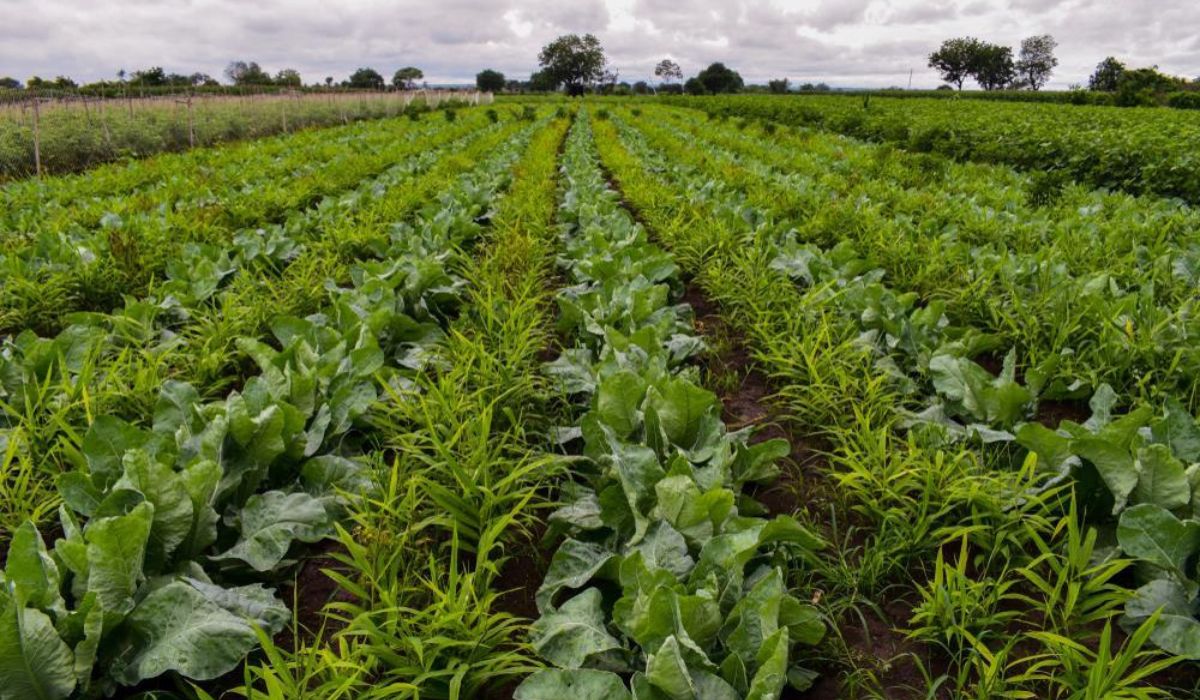



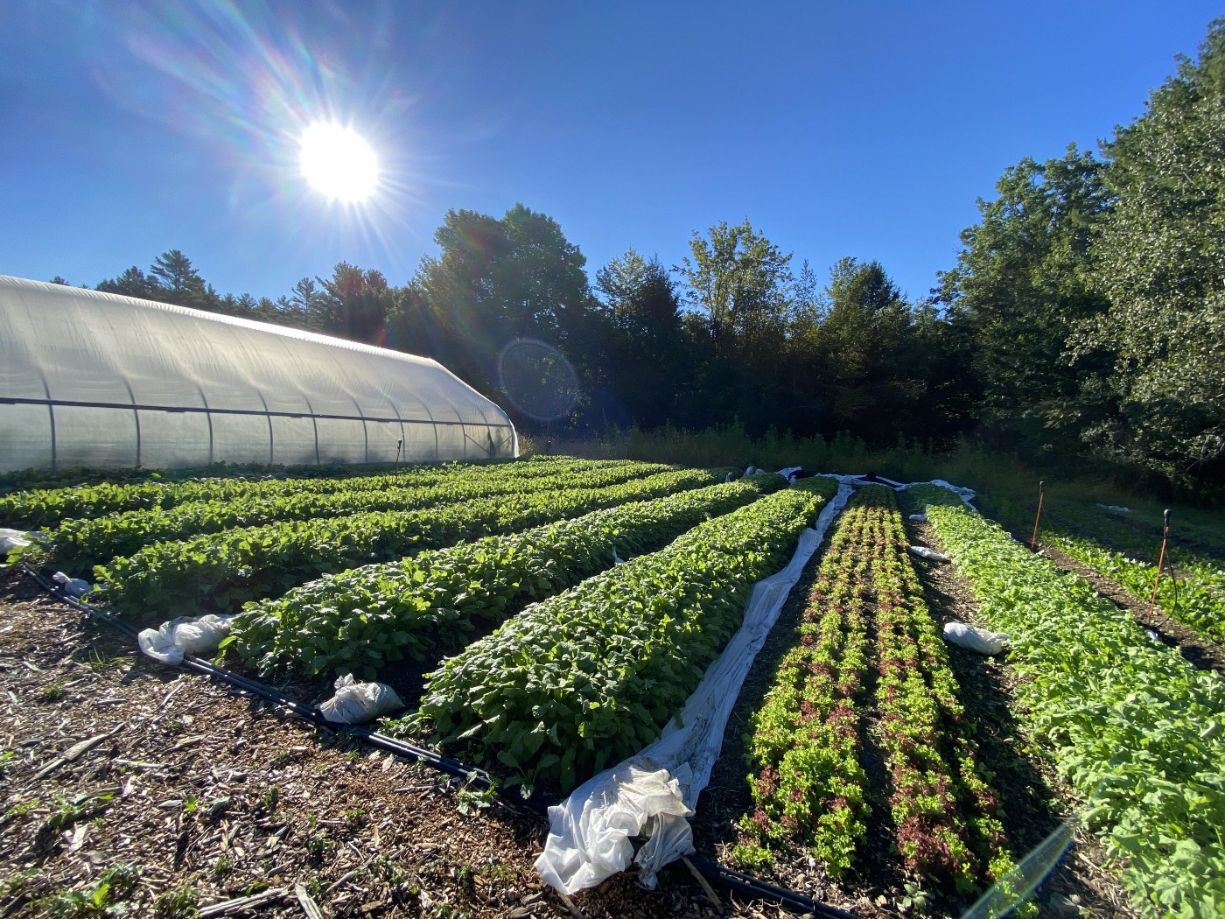

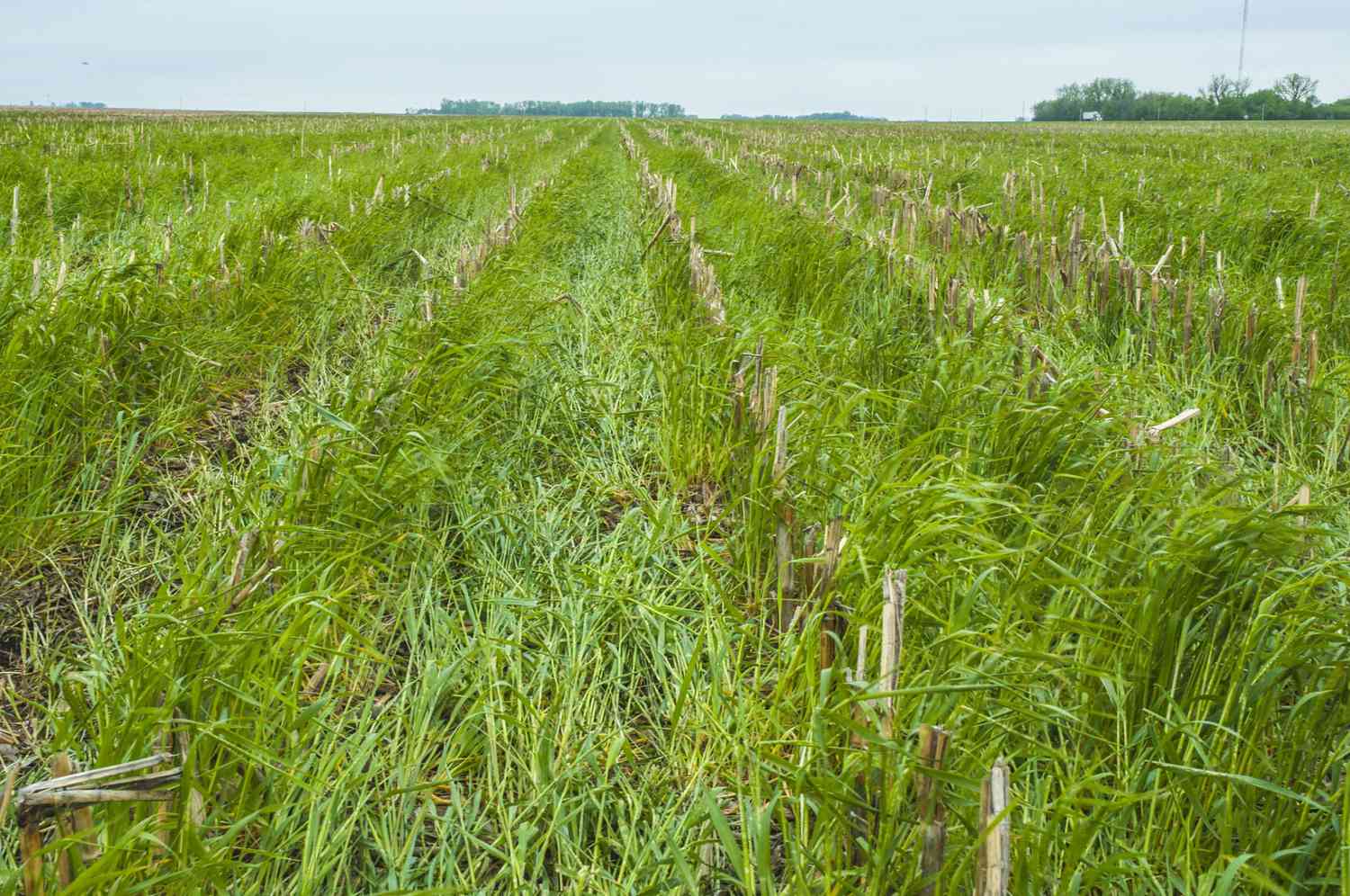

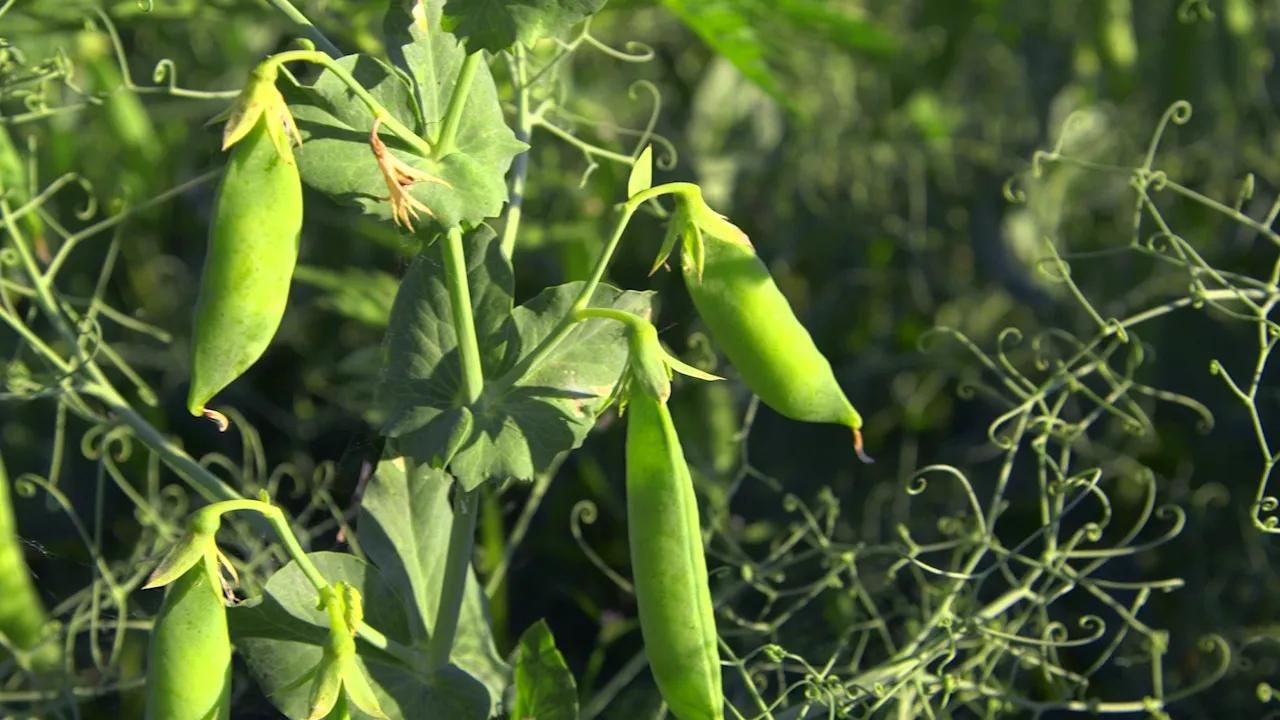
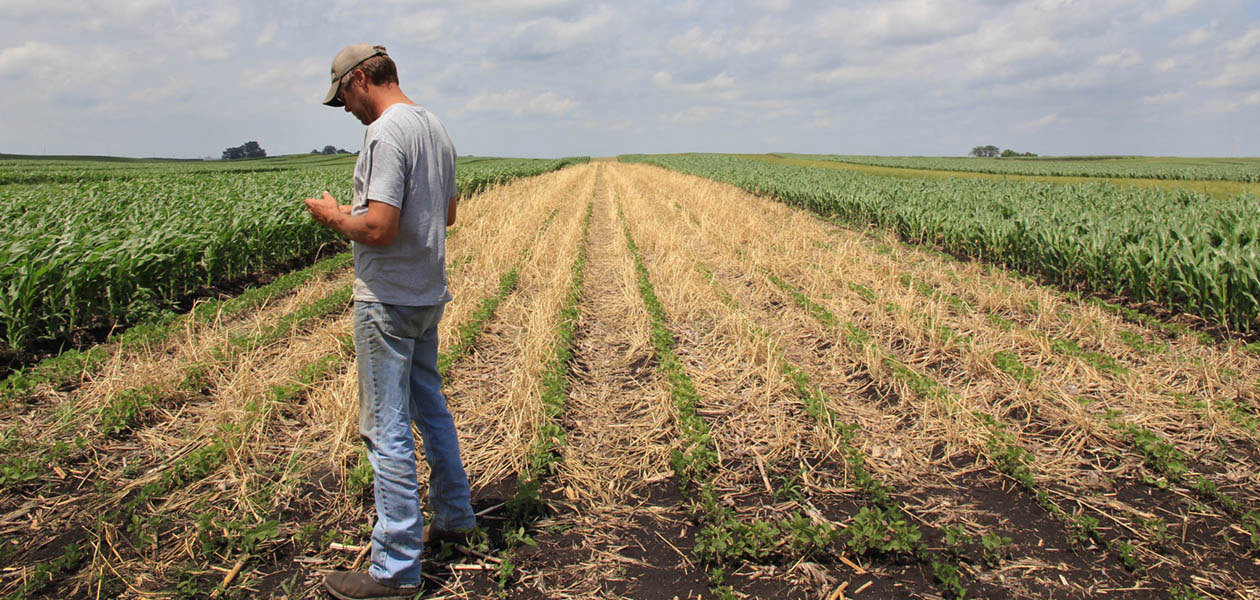
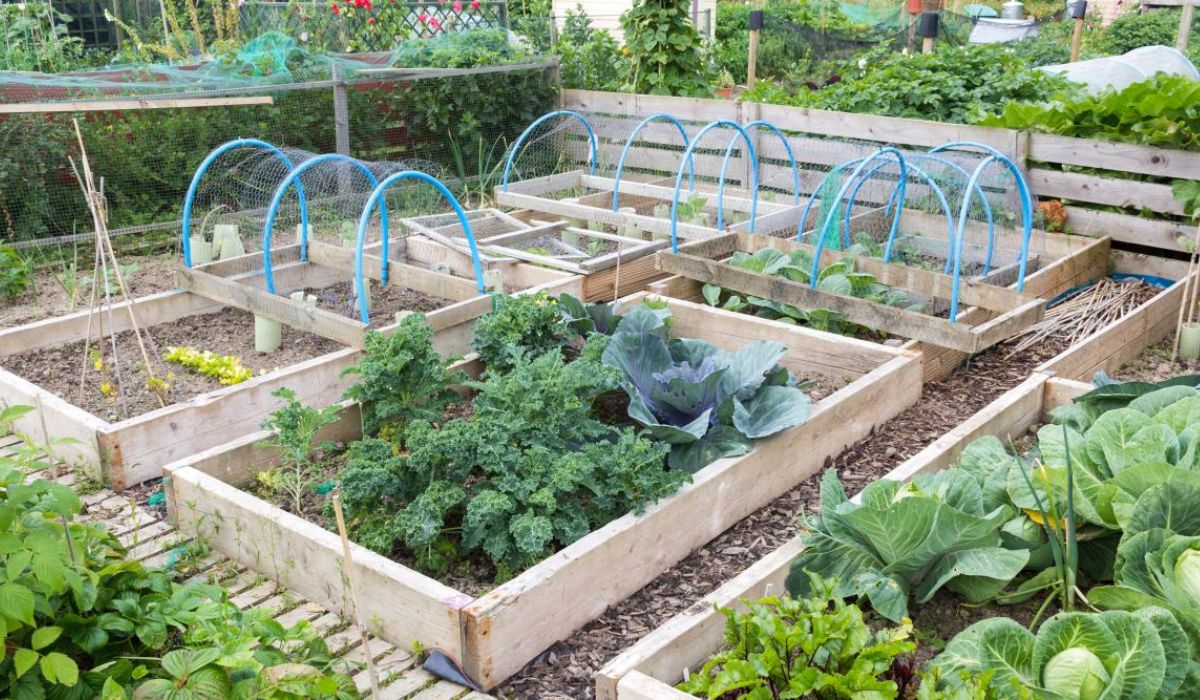


0 thoughts on “Why Do Farmers Include Soybeans In A Grain Crop Rotation”